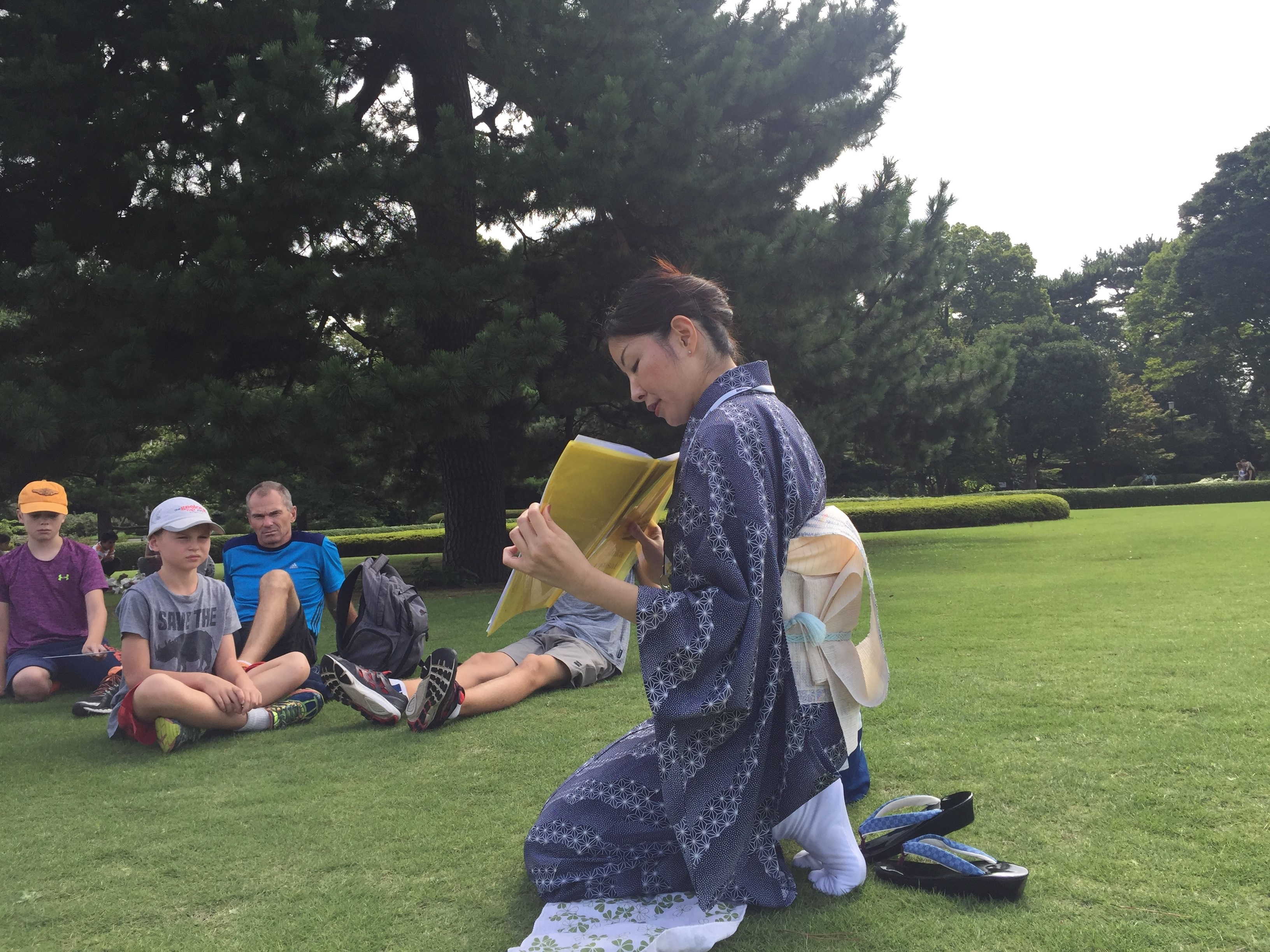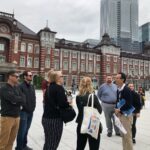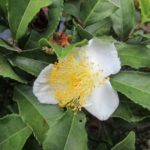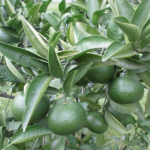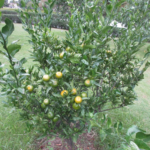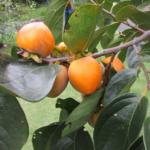Thank you for choosing our tour to the East Gardens of the Imperial Palace on October 13. We welcomed 21 people from U.S.A., Germany, Israel, Italy, China, Finland, Iceland, Turkey and Australia.
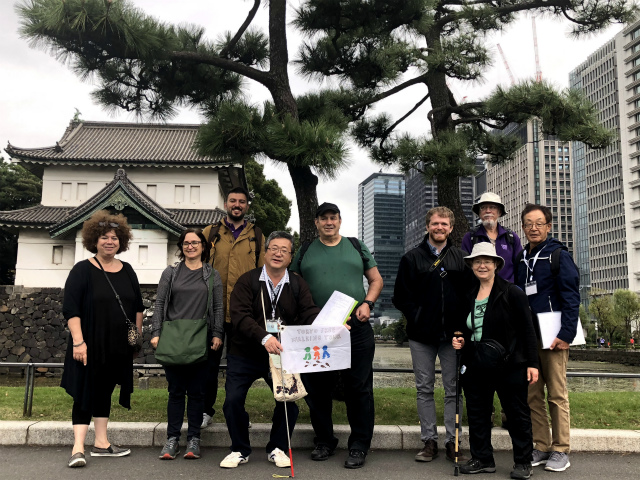
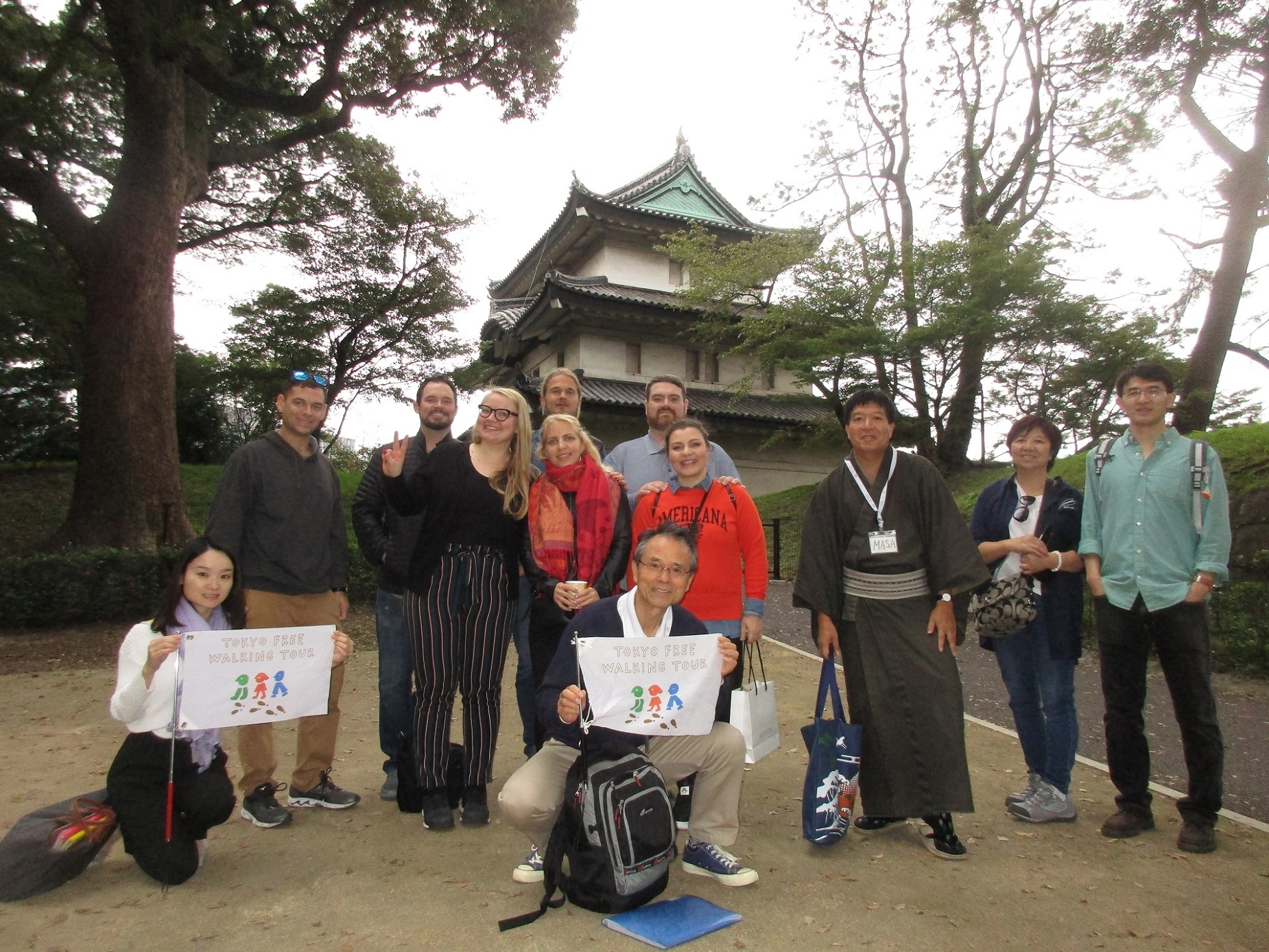
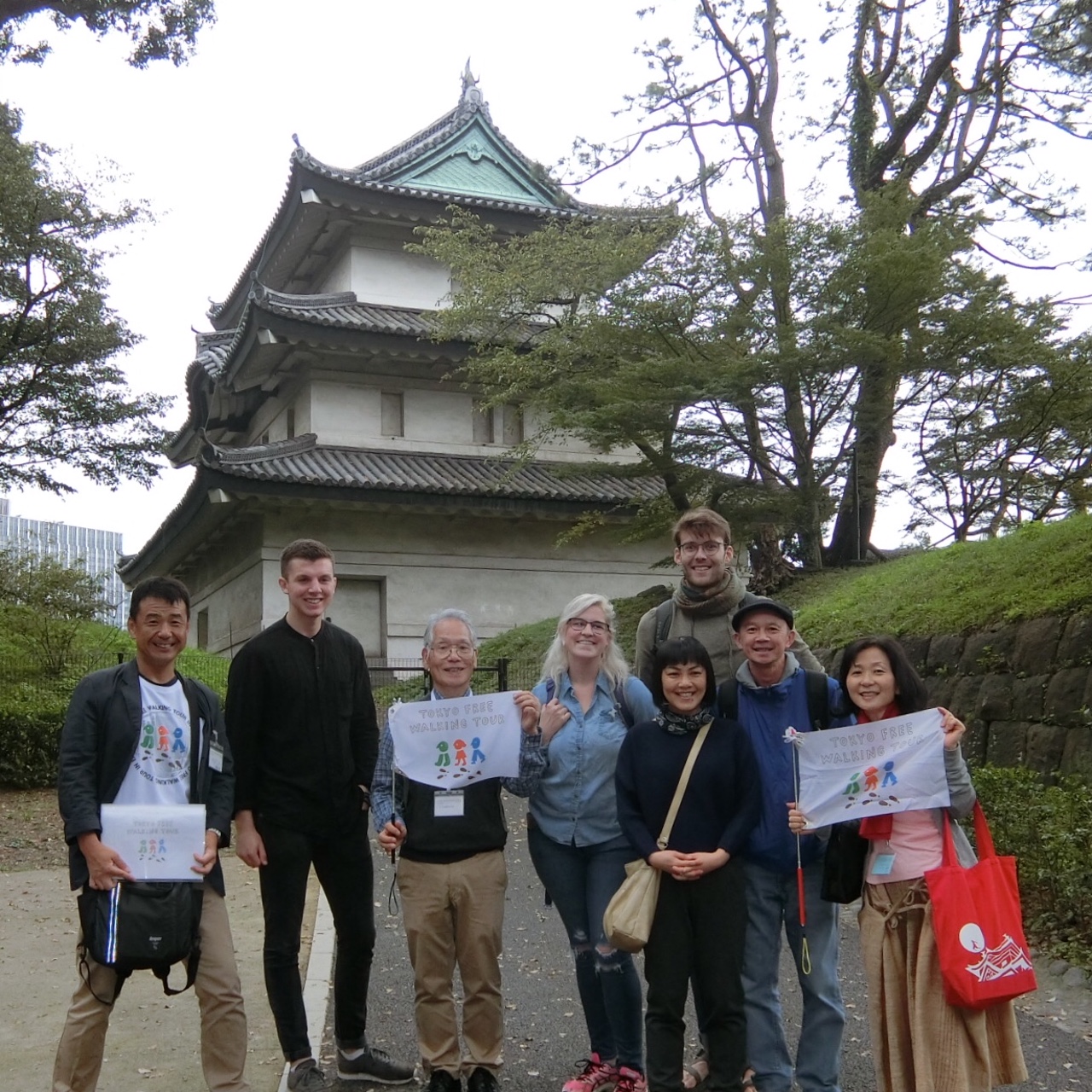
The weather was cloudy but very comfortable. We felt like autumn more and more. I hope all the guests enjoyed walking with us and perhaps instant kimono as well.
It is too early to see the autumn foliage in Tokyo but we have subtle sign of autumn at the Gardens. There is a small tea green field around the main compound where the tea trees have just started to blossom. These white flowers bloom behind the leaves and smell delicately sweet. The Blooming period of the tea trees here is between early October and mid- November
In fact, the trees of green tea, black tea and other tea are produced from the same tea tree’s leaves. Fermentation decides the type of tea. Japanese tea is not fermented while black tea thoroughly fermented. Other tea such as oolong tea is partly fermented. Among the Japanese tea cultivation process is different. The leaves of green tea are grown naturally with the strong sun, while the matcha leaves are shade-grown with indirect sunshine. Then they are steamed, dried, and ground down to form a fine powder.
Let’s look at other areas to look for autumn at the main compound where a variety of fruit trees are cultivated. Some of them have come to fruition. About 10 years ago they were planted based on the current Emperor’s idea so that the visitors would be able to enjoy watching the orchard. They are the trees of apples, mikan(mandarin orange), persimmons, peaches and plums. Of these, mikan and persimmons which the Emperor personally planted are now bearing fruit. It’s the best time to see. I always wonder who will be able to eat those Imperial fruits!
We are looking forward to welcoming you and sharing the Japanese culture with you at our tour.
(posted by Kuma)

